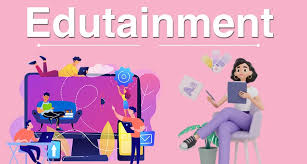In today’s digital age, the classroom experience has evolved dramatically. The modern teacher increasingly incorporates multimedia elements into their curriculum, with kids animated shows becoming a powerful educational tool. These colorful, character-driven programs offer more than just entertainment—they provide unique opportunities to convey complex concepts in accessible ways, making them invaluable allies in educational settings.
When educators thoughtfully integrate animated content into their lessons, they tap into the visual learning style that many children naturally prefer. Studies show that visual learners comprise approximately 65% of the population, and animation speaks directly to this learning preference. By referencing familiar characters and scenarios from popular animated shows, teachers create immediate points of connection that can transform abstract lessons into concrete understanding.
Animation’s storytelling power cannot be underestimated in educational contexts. Through narrative arcs and character development, animated shows instill values like perseverance, teamwork, and critical thinking. They present problem-solving scenarios that mirror real-life situations but in simplified, approachable formats. This narrative-based learning helps children internalize lessons more effectively than traditional instruction alone.
The emotional engagement factor of animated content creates another dimension of learning opportunity. When children connect emotionally with characters facing challenges, they develop empathy and social awareness. These emotional connections create stronger memory pathways, making lessons associated with beloved characters more likely to be retained and recalled.
Cultural representation in modern animated shows provides teachers with excellent entry points for discussions about diversity and inclusion. Today’s animation landscape includes characters from various backgrounds, abilities, and family structures, offering natural opportunities to normalize differences and celebrate uniqueness. This representation matters tremendously in developing inclusive mindsets from an early age.
STEM subjects particularly benefit from animation’s ability to visualize complex processes. Shows like “The Magic School Bus” and “Sid the Science Kid” demonstrate scientific principles through visual metaphors that make abstract concepts tangible. When teachers reference these visualizations during lessons, they provide students with mental models that aid comprehension and retention.
Language acquisition receives a significant boost through animated content as well. The clear pronunciation, varied vocabulary, and contextual language use in quality animated programming create natural language learning environments. For both native speakers and second-language learners, these shows provide engaging models of proper language use that complement formal instruction.
The rhythmic patterns and memorable songs featured in many animated programs support memory formation and information recall. Teachers who incorporate educational songs from animated shows into their lessons leverage these musical elements to help students remember key facts, sequences, or concepts. The catchiness of these tunes creates lasting recall triggers.
Digital literacy development happens naturally through discussion of animated content. When teachers analyze animated stories with students, they build critical viewing skills that transfer to all media consumption. Learning to identify messages, recognize persuasion techniques, and evaluate content quality prepares children for a media-saturated world.
Animation’s ability to simplify complex topics makes it particularly valuable for introducing challenging subjects. Abstract concepts in mathematics, scientific processes, historical events, or social dynamics can be presented through character-driven scenarios that children readily understand and relate to. This simplification serves as a bridge to more complex understanding.
The cross-curricular potential of animated content allows innovative teachers to create thematic units that span multiple subjects. A single episode might contain elements relevant to science, language arts, social studies, and character education, providing rich material for integrated learning experiences that demonstrate how knowledge connects across disciplines.
In conclusion, the thoughtful integration of animated content into educational practices creates powerful learning opportunities that extend far beyond mere entertainment. As digital natives continue to fill our classrooms, educators who leverage these engaging resources meet students in their natural element while building crucial bridges between entertainment and education. The colorful characters and compelling stories of quality animated programming can truly become partners in the educational journey, supporting both academic achievement and social-emotional development.

